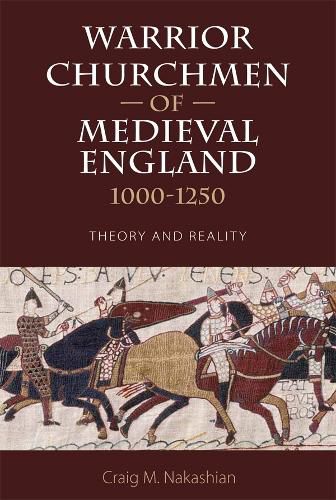Readings Newsletter
Become a Readings Member to make your shopping experience even easier.
Sign in or sign up for free!
You’re not far away from qualifying for FREE standard shipping within Australia
You’ve qualified for FREE standard shipping within Australia
The cart is loading…






Christianity has had a problematic relationship with warfare throughout its history, with the Middle Ages being no exception. While warfare came to be accepted as a necessary activity for laymen, clerics were largely excluded frommilitary activity. Those who participated in war risked falling foul of a number of accepted canons of the church as well as the opinions of their peers. However, many continued to involve themselves in war - including active participation on battlefields.
This book, focusing on a number of individual English clerics between 1000 and 1250, seeks to untangle the cultural debate surrounding this military behaviour. It sets its examination into a broader context, including the clerical reform movement of the eleventh and twelfth centuries, the development of a more comprehensive canon law, and the popularization of chivalric ideology. Rather than portraying these clerics as anachronistic outliers or mere criminals, this study looks at how contemporaries understood their behaviour, arguing that there was a wide range of views - which often included praise for clerics who fought in licit causes. The picture which emerges is that clerical violence, despite its prescriptive condemnation, was often judged by how much it advanced the interests of the observer.
CRAIG M. NAKASHIAN is Associate Professor of History at Texas A&M University-Texarkana.
$9.00 standard shipping within Australia
FREE standard shipping within Australia for orders over $100.00
Express & International shipping calculated at checkout
Christianity has had a problematic relationship with warfare throughout its history, with the Middle Ages being no exception. While warfare came to be accepted as a necessary activity for laymen, clerics were largely excluded frommilitary activity. Those who participated in war risked falling foul of a number of accepted canons of the church as well as the opinions of their peers. However, many continued to involve themselves in war - including active participation on battlefields.
This book, focusing on a number of individual English clerics between 1000 and 1250, seeks to untangle the cultural debate surrounding this military behaviour. It sets its examination into a broader context, including the clerical reform movement of the eleventh and twelfth centuries, the development of a more comprehensive canon law, and the popularization of chivalric ideology. Rather than portraying these clerics as anachronistic outliers or mere criminals, this study looks at how contemporaries understood their behaviour, arguing that there was a wide range of views - which often included praise for clerics who fought in licit causes. The picture which emerges is that clerical violence, despite its prescriptive condemnation, was often judged by how much it advanced the interests of the observer.
CRAIG M. NAKASHIAN is Associate Professor of History at Texas A&M University-Texarkana.